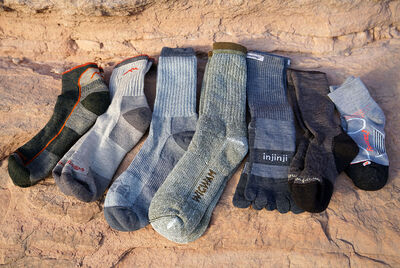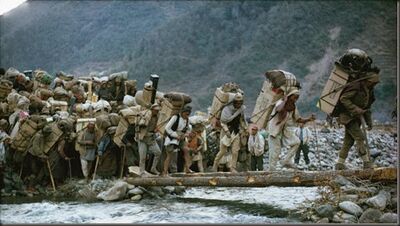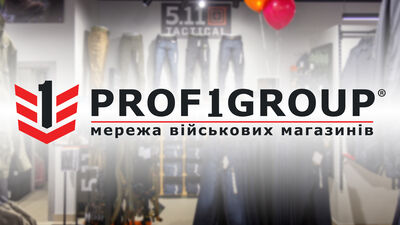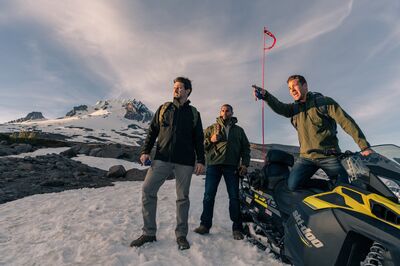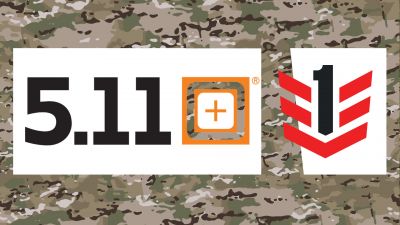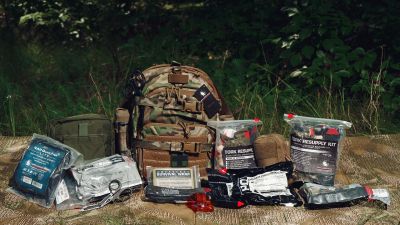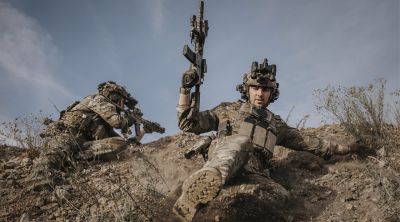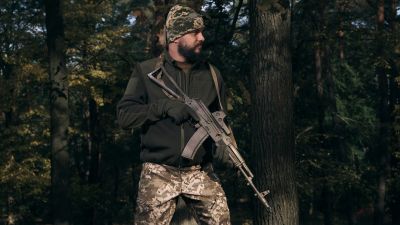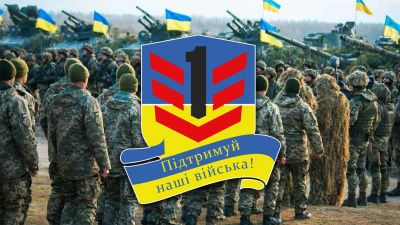Types of underwear. How to choose the right thermal underwear.
History, types and features of proper selection of thermal underwear.
In this article we will write about an important closet item for military personnel, travelers, fans of active lifestyle and just people who like to feel comfortable in any weather and season. Unfortunately for many, the topic of thermal underwear is still unexplored. Many of those who do use it, may not use it correctly, or just have a low-quality product, due to which they can not fully appreciate the benefits of a base layer of clothing. Below we will write about the history of the origin, the main types, their features, as well as how to choose the right thermal underwear for different conditions. For many people will be news that thermal underwear is not only for winter use, and that in the summer it will also be practical, although it performs somewhat different functions, increasing the efficiency of the body. You will also learn that in Ukraine there is a company that produces high-quality thermal underwear made from top materials, which are highly valued in Ukraine and far beyond its borders.
A look back in history
First Attempts.
The first mass-produced underwear could be considered the Roman tunic. It was also the first mass prototype of ancient thermal underwear, over which warriors wore combat armor. The main material for production was cotton, a very hydrophobic material (quickly absorbs and distributes moisture on the surface and accelerates drying). This feature made it indispensable among Roman legionaries. During high physical activity, the human body excretes large amounts of moisture, its accumulation and uneven distribution without drying out leads to chafing, blisters, infections, odors, etc. The introduction of the Roman tunic solved the issue of thermoregulation for tens and hundreds of thousands of soldiers from Western Europe to the Eastern Sahara, one of the greatest armies in official history.
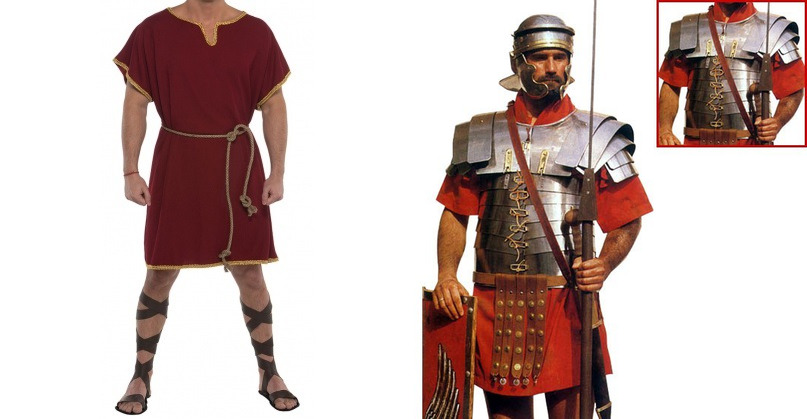
XVII-XVIII centuries.
Beginning in the 17th and 18th centuries, most of the world's armies began to be equipped with special shirts and trousers. Their main difference was a free fit, universal size, they could not be made tight – because of the poor elasticity of the smooth fabric such products were torn. The main material for the manufacture remained cotton, less often – wool. The functionality of these products was the same as in the Roman tunic, from which we can conclude that for such a long period of time in this area little has changed.
Industrialization.
In this state, thermal underwear existed until about the end of the 19th and beginning of the 20th century. It was at that time in the U.S. began to produce the prototype of modern thermal underwear made of jersey. In the summer version, the basis was cotton knitwear, which had a high hydrophobicity. With thick knitwear (cotton or cotton-wool blend) raglans and pants for winter use were made, which also excreted moisture, but kept warm well. Thanks to the knitted structure, such clothes fit the body better and did not tear during use in contrast to the smooth fabric.

In the process of successful operation, having appreciated the high functionality of knitted materials, many armies during the Second World War began to be provided with just such products.
The situation in the Soviet Union.
Infantry units in the USSR were equipped with the so-called "beluga" – cotton raglans and loose-cut trousers made of smooth fabric. Only the officers were equipped with knitwear. Airborne and naval units were equipped with knitted raglan, the so-called "telnyashka".These items were a special feature of the USSR, in other countries they were rarely used.

World War II.
At the end of World War II and later, jersey became more popular. Various manufacturers experimented with materials (wool and cotton), density and cut. A synthetic material popular at the time, viscose, began to be added to the yarn, the products became nicer to the touch, more wear-resistant, the hydrophobicity improved and the weight decreased.In the elite military units of Germany and Great Britain, and later the U.S. military personnel were equipped with two types of thermal underwear – summer and winter versions. Summer underwear was traditionally made of cotton because of its hydrophobicity, while winter underwear was denser and made of wool, which wicked out moisture and also had good thermo-regulating properties.
Technological progress.
It is traditional for most spheres of life that a technological breakthrough also took place in the period of mastering synthetic materials, which accounts for the 50-60s of the 20th century. This was the time when synthetic materials began to be added to knitted yarn, which improved properties, practicality and functionality of products. The main materials are: nylon, polyester, acrylic, viscose, elastane and others.
Synthetic materials have better thermoregulatory properties, ventilation, perspiration, and they are more resistant to the aggressive environment that excessive sweating creates. With the addition of elastane, things become tighter and fit better to the body, this increases their properties, and also prevents the formation of folds and chafing. Experiments with synthetic materials have led to the fact that today thermal underwear made of synthetic materials has almost replaced wool and cotton.
At the same time, in the USSR by the end of the eighties, that is, almost until its collapse, wool and cotton with the addition of viscose were used.
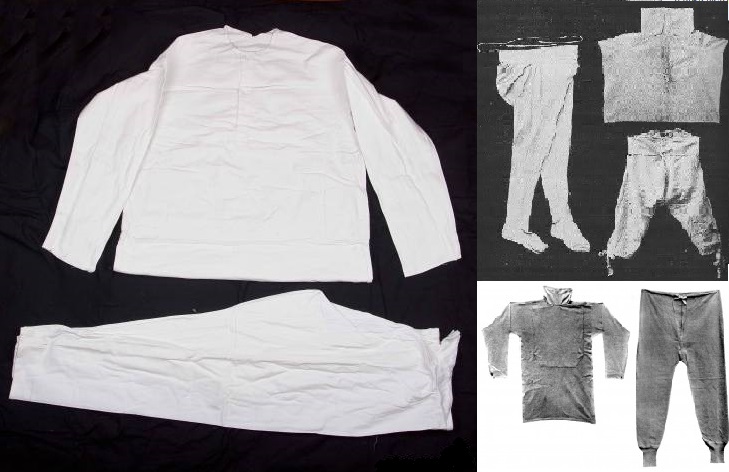
Another breakthrough in the production of thermal underwear and insulating layers of clothing in general was the invention and introduction of a material called fleece. It was invented at one of the units of the company Polartec in 1979. Since then and to this day, Polartec has been the leading manufacturer of synthetic thermal insulation materials.
Modernity
Basic types.
There are many types and structures of materials, density distributions, and cuts of thermal underwear. It mainly depends on the manufacturer and the designers, trying to make their products more technologically advanced, they experiment with these parameters. Here we will describe three most popular technologies and their features: Polartec Delta and Power Grid (developed by Polartec) and Coolmax, which are actively used in thermal underwear production all over the world, including Ukraine.
Polartec Delta.
- Composition – polyester or polyamide, lyocell, elastane.
- Application – lightweight sportswear, summer thermal underwear, workout clothes.
- Functions – moisture transportion to the surface, fast drying, thermo-regulation.
- Technologically advanced – hydrophobic fibers that tightly adhere to the body eliminates moisture and dries quickly, while partially blocking the withdrawal of moisture, creating a natural cooling.
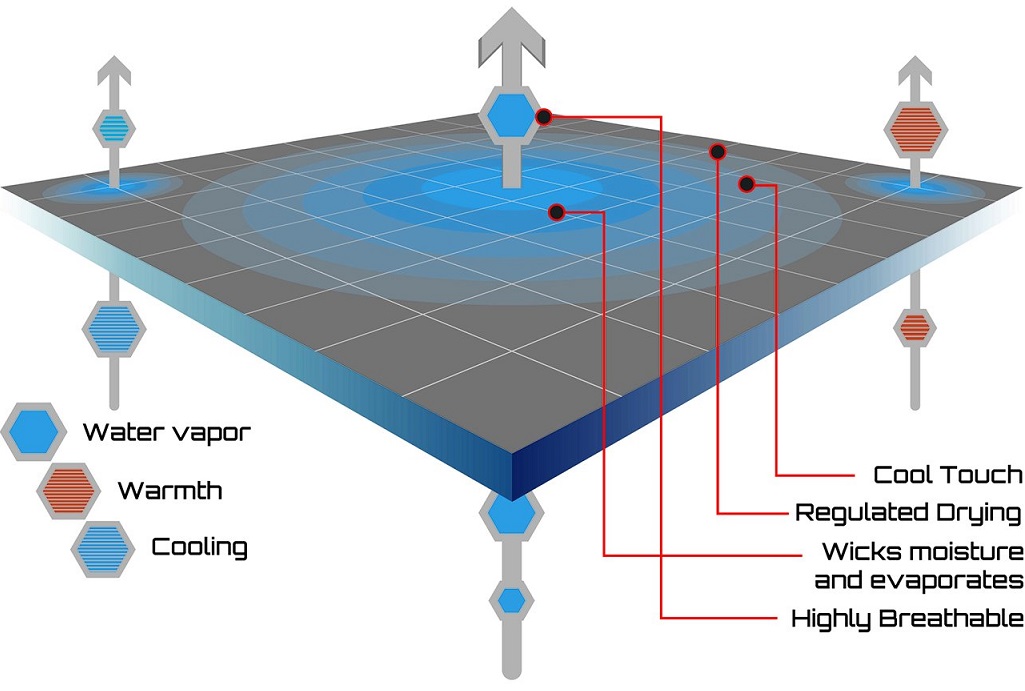
Coolmax.
- Composition – polyester, elastane (Lycra).
- Application – lightweight sportswear, clothing for training, cyclists, athletes, etc.
- Functions – with high indicators of hydrophobicity and thermoregulation, it is widely used in sports and among the military.
- Technological – polyester fibers, having a unique structure (not a round cut, but four-channel capillaries), even thinner, which provides a greater area of fit of the material to the body, improving the withdrawal of moisture and thermoregulation. Combined with the Lycra material provides a better fit, which increases efficiency.
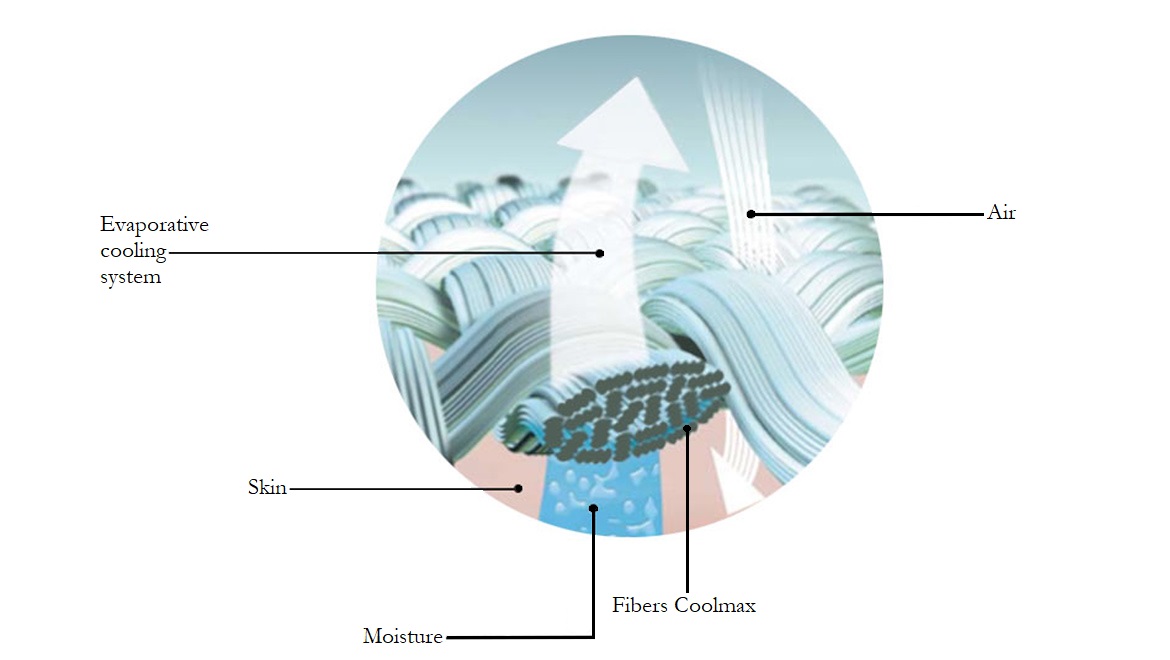
Power Grid.
- Composition – polyester or polyamide, elastane.
- Application – dense sportswear, thermal underwear for winter, demi-seasonal use and for static activity (depends on density).
- Functions – heat retention, moisture output and excessive heat on the surface, drying.
- Technological efficiency – a material of net structure, has good hydrophobic and vapor permeable properties in thin places for the withdrawal of moisture and excessive heat, and thanks to the thickened cells, at the same time saves heat well.
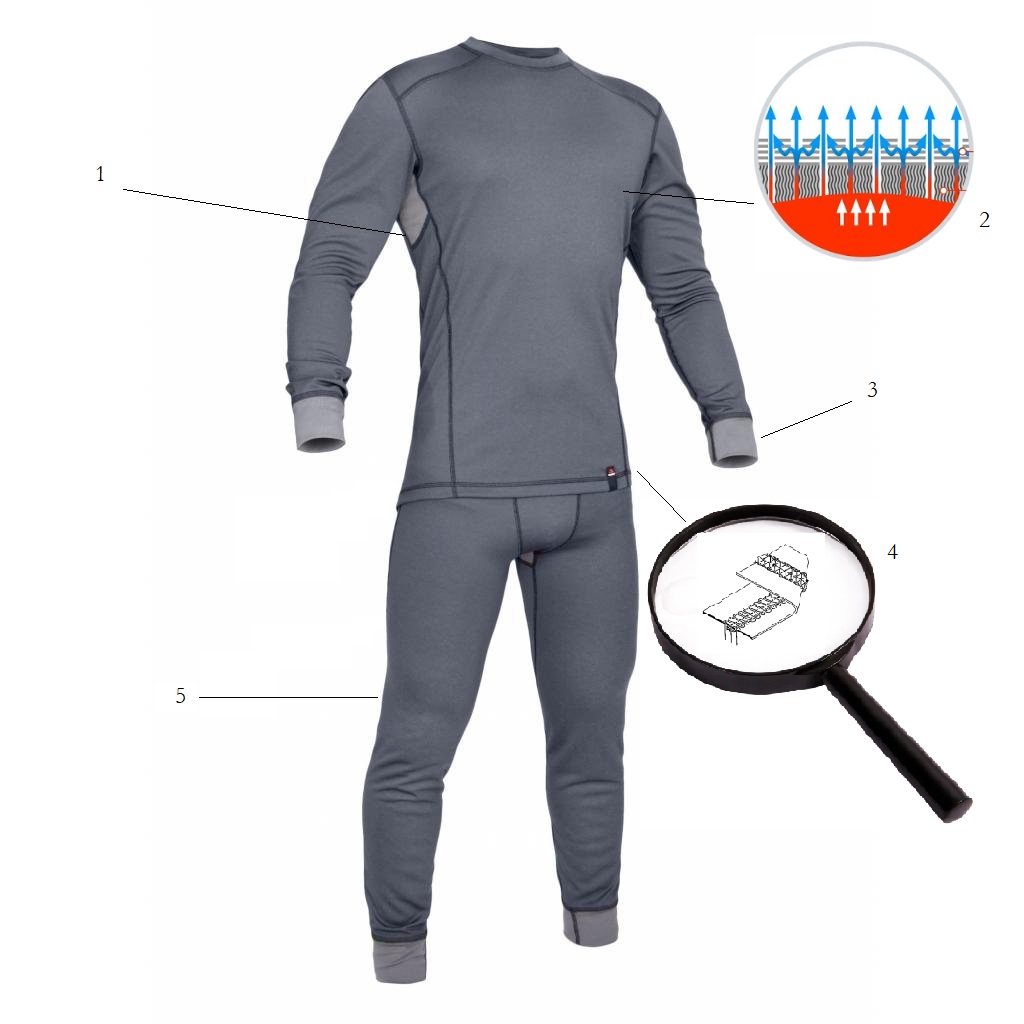
P1G-Tac PCWU Power Grid thermal underwear.
- Less dense material in high perspiration areas for quick drying.
- Polartec Power Grid evaporation and thermoregulation system.
- Thickened sleeves prevent the sleeves from rolling up.
- All seams of the Flatlock system, flatlock, stretch with fabric, preventing moisture build-up and chafing.
- Anatomic fit.
You can often see products in which the structure is zone by the use of materials of different densities. So, in the areas of high perspiration less density for better ventilation, in the less moving parts – a higher density.
Also in many armies around the world, the military is equipped with special clothing according to unified protocols. The most famous of these is the U.S. Army's ECWCS protocol, the Extended Cold Weather Clothing System. This system has 7 layers of high-tech clothing, which in different configurations are used in all weather conditions from +5 to -40 degrees Celsius.
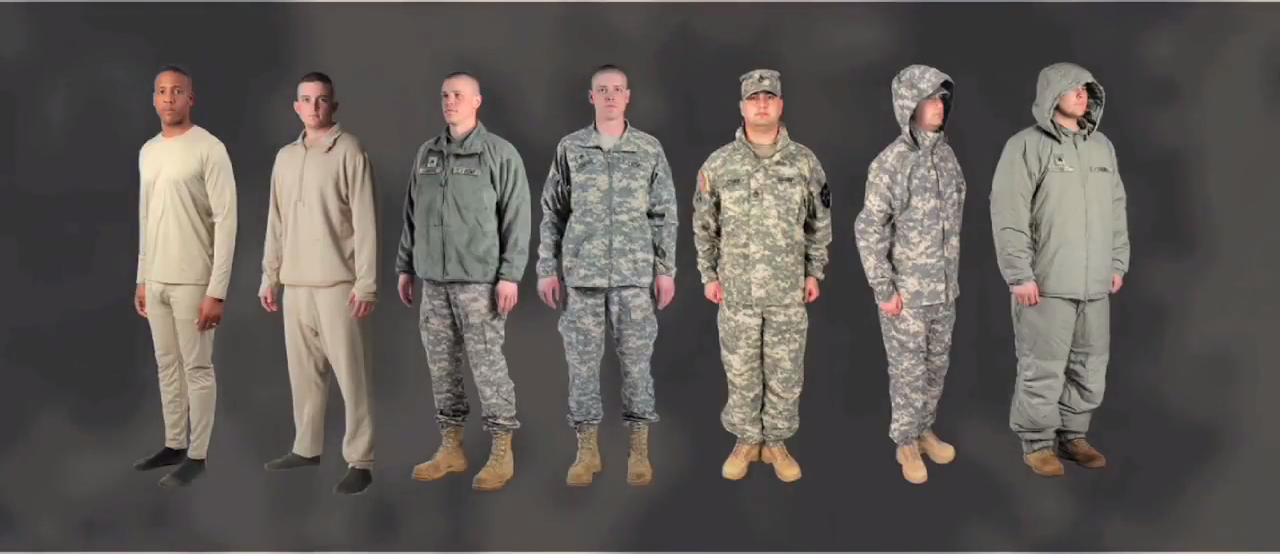
Most of the armies of the world any kind of equipment approved by a special agency, including thermal underwear. Such equipment must meet many parameters: wear resistance, reliability, thermal regulation, perspiration, resistance to high temperatures and fire, masking in the UV range (NIR), etc.
Choose correctly!
As with any other equipment – first of all you need to decide for what purposes you need thermal underwear, in some cases you need two kinds, because universal types of clothing does not exist.

For hot climates are important performance wicking and drying. Here are used products made by technology Polartec Delta, Coolmax, density 120-200 grams / sq.m.
In cold climates, heat retention is an important indicator, although the sweat and drying performance is also very important. When moisture accumulates, in addition to problems with sweat, you will have wet clothes, which accelerates the process of hypothermia. In such cases, we recommend using products made of Power Grid (Polartec) materials, with a density of already 200-280 gr./m2.
For demi-seasonal conditions use thermal underwear with the addition of merino wool or polyamide and elastane, this makes it more tight. For static activities the same materials, but more dense because of the low activity of the body.
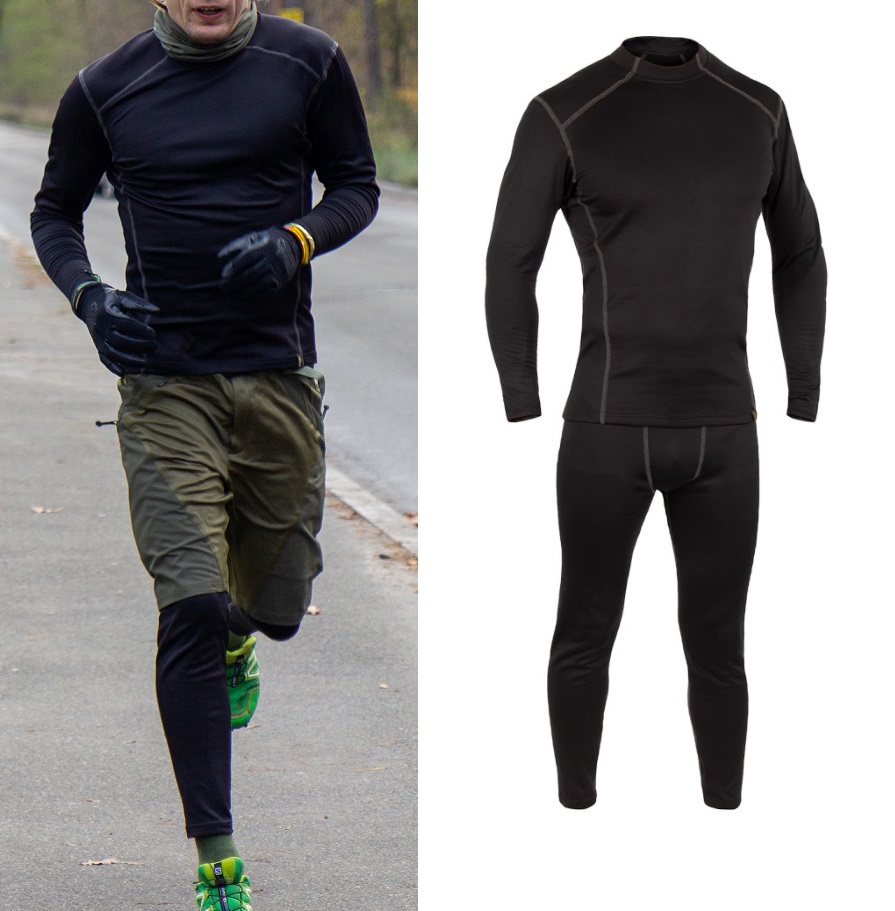
A separate type is fireproof thermal underwear, which has non-combustible properties and does not lose its manufacturability in high temperatures. These products are mainly used by military and firemen by virtue of the specificity of their employment. The leading manufacturer of such clothes is Polartec, all products for this purpose are marked with the index FR – Flame Resistant.
Pay attention to the seams! Quality products are sewn by technology Flatlock – a flat seam that stretches with the fabric, prevents tearing and chafing.
Underpants are an important part of the base layer. Experienced military and hikers recommend the use of long shorts. When active and sweaty, short underpants can curl, crease and chafe, which can have unpleasant consequences.
When choosing thermal underwear pay special attention to the manufacturing company. It is best to buy in a store with a well-known manufacturer of sports or military clothing. As a rule, these manufacturers sew reliable clothes of high quality materials to international standards, provide a guarantee on products, accumulate over the years the customer base. Such products will be reliable helpers in your work, travel or daily life, with proper care they will serve you for a long time and will leave only good impressions.

Now you can often find fakes of famous brands on the market, on the Internet and even in stores. Usually they are several times cheaper for the branded goods, although sellers can hide this fact, and most people will not be able to distinguish a quality product from a counterfeit. To make such things cheaper, low-quality polyester and threads are used in tailoring. The main thing – when buying such products, in addition to poor technical indicators, you can get many more problems – when processing cheap polyester use formaldehyde, which causes various skin and cancer diseases, so once again we emphasize – quality goods should buy in brand stores or on their online resources.




